The Titanic has become famous as being the ‘unsinkable’ ship that did unfortunately sink.
The Titanic made some port stops on her trip before the accident happened, where she picked up passengers and supplies.
A common misconception is that the Titanic set sail from Southampton, heading to New York, and didn’t visit any other ports. This was not the case.
In this post, we will explore where the Titanic went, what she did in each port and where she was scheduled to sail to.
Where Did Titanic Set Sail From?
The Titanic set sail from Southampton, England, on April 10th 1912.
She was built in Belfast, Northern Ireland, and sailed to Southampton in England for her maiden voyage.
She stopped in Cherbourg, France and Queenstown, Ireland to pick up passengers, crew and supplies. Her final destination was to be New York, USA.
Queenstown is now called Cobh, a seaport town in County Cork, Ireland. Queenstown, Ireland, was named after Queen Victoria in 1849 to commemorate her visit to the country.
The town was originally called “Cove” but reverted back to its Irish name, Cobh, in 1921 after the establishment of the Irish Free State
The Southampton – Cherbourg – New York route had become very popular by the early twentieth century. The crossing should have taken around six days in total.

The return journey should have been from New York to Plymouth in England, back to Cherbourg, and finally to Southampton.
The Titanic’s Scheduled Route
| Southampton | Cherbourg | Queenstown | |
| Arrival | Wednesday 10th April, 6:45 pm | Thursday 11th April, 11:30 am | Wednesday 10th April, 12:00 pm |
| Departure | Wednesday 10th April, 12:00pm | Thursday 11th April, 1:55 pm | Thursday 11th April, 1:55pm |
Many modern cruise ships complete transatlantic crossings regularly, although their routes have changed.
The most notable transatlantic crossings are taken by the last Ocean Liner at Sea, the Queen Mary 2. She regularly sails between New York and Southampton.
Find out what I thought of that amazing ship here:
To learn more about how modern cruise ships compare to the Titanic, check out this post next:
Titanic vs a Modern Cruise Ship Fleet – Comparison with Photos!
White Star Line (the company that owned the Titanic) planned to offer weekly sailings in each direction, leaving Southampton on Wednesdays and New York on Saturdays.
Both the Titanic and her sister ship, The Olympic, were scheduled to sail throughout the year, with trips booked until December 1912.
Titanic’s First Journey – From Belfast to Southampton
The Titanic left Belfast on Tuesday, 2nd April, at 8 pm. Thousands lined the shore of Belfast Lough to watch her set sail for Southampton, never to return. She arrived in Southampton at 12:00 am on Thursday 4th, April.
Work on the White Star Line’s state-of-the-art luxury steamship began in March 1909 in Belfast, Ireland, at the Harland and Wolff shipyards. Alexander Carlisle designed the Titanic.
It took two years to complete the ship, the hull of which was the largest movable manufactured object in the world at the time.
On 31 May 1911, the Titanic was officially launched, first entering the water of the River Lagan.
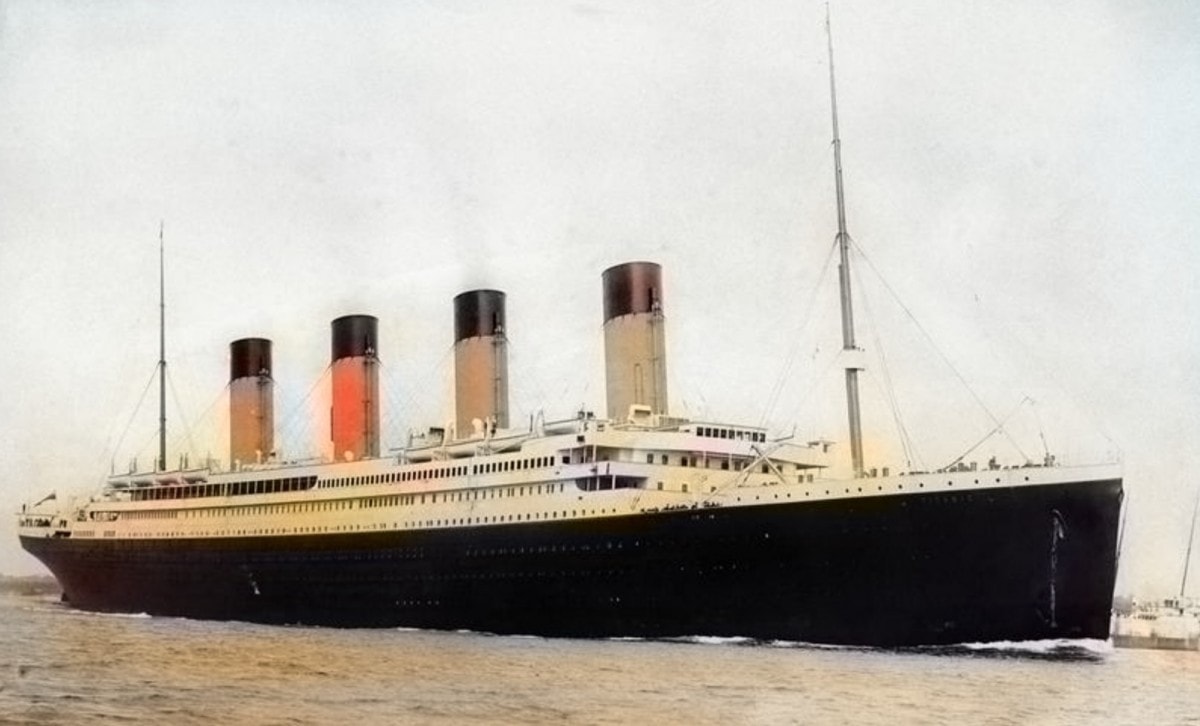
After a series of sea trials, the Titanic, with only a skeleton crew, set sail for Southampton on 2 April 1912, seen off by thousands lining the Belfast Lough.
On the journey to Southampton, Titanic recorded a speed of 23.25 knots. The journey to Southampton was 570 nautical miles.
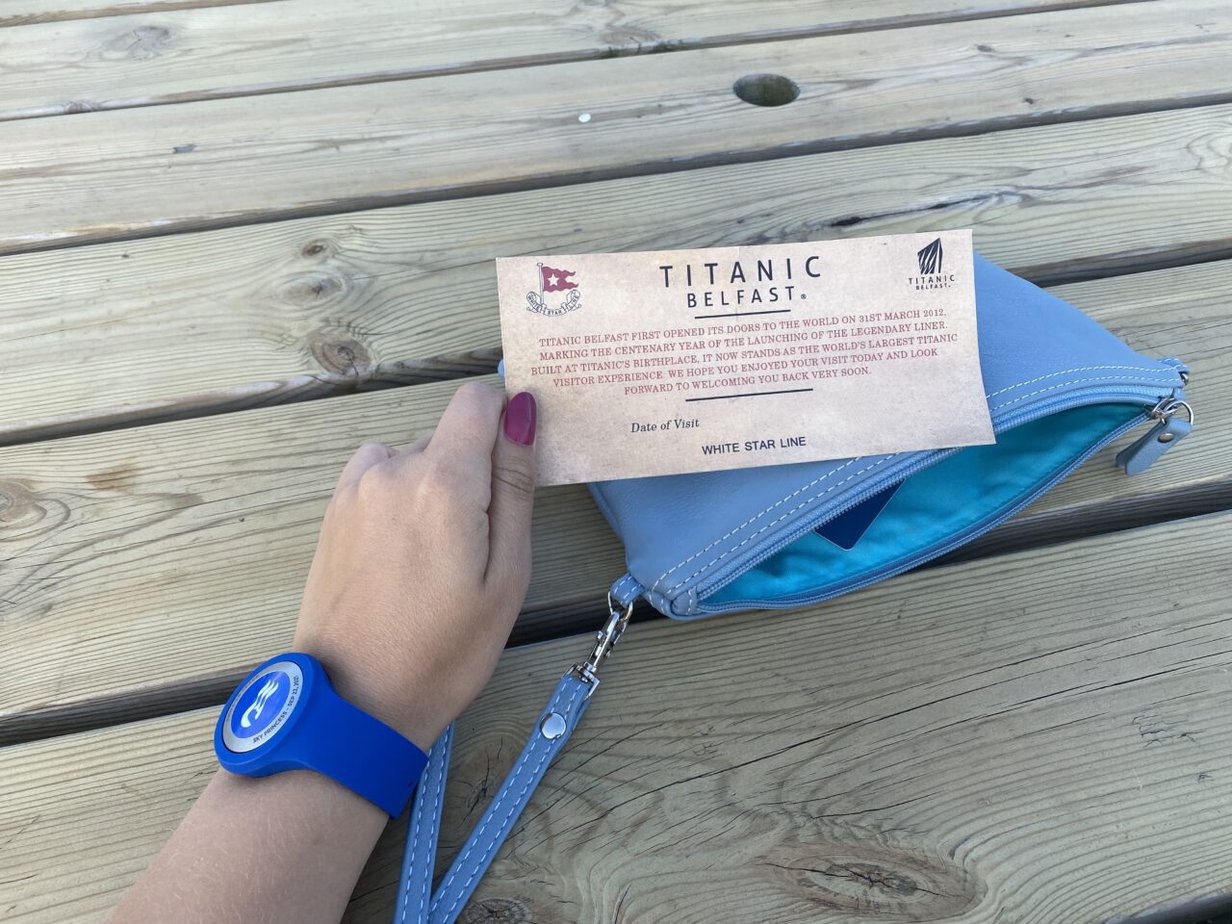

I Was Amazed by The Titanic Belfast Museum
Today, the Titanic Belfast visitor attraction, based next to the Harland and Wolff shipyards, tells the story of the Titanic from its conception and construction.
I visited the museum in 2021 and was blown away by the experience. The museum even has a ride in the middle! A ride!

Titanic’s Second Journey – From Southampton to Cherbourg
The Titanic left Southampton on Wednesday, 10th April, at 12 pm.
She arrived in Cherbourg at 8.10 pm on Wednesday 10th April.
Around midnight on 4 April 1912, the Titanic arrived in Southampton, where she remained docked for a week. The crew were the first to come aboard.
Most of the crew were from Southampton, of the 685 crew members who died in the tragedy, 549 were from the city.
Captaining the ship was the most senior White Star Commodore, Captain Edward J. Smith.
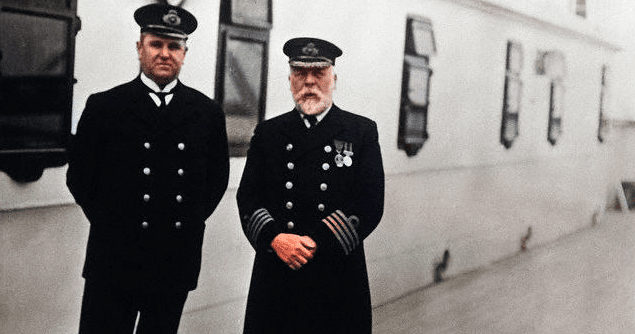
A Ship Visit With a Difference
On 5th April, the public had an opportunity to visit the Titanic. She was decorated for the occasion with flags and bunting.
After the public had visited the ship, passengers were welcomed aboard.
| Passengers Embarking the Titanic in Southampton | Total Titanic Passengers | Percentage Embarked in Southampton | |
| First Class | 179 | 324 | 55% |
| Second Class | 247 | 284 | 87% |
| Third Class | 494 | 709 | 70% |
At the time, there was a coal strike in Britain, which meant that coal had to be borrowed from other ships, including her sister ship, Olympia, so that the Titanic could begin her voyage.
At 9 am on the 10th April Titanic had her one and only lifeboat drill.
100,000 well-wishers and journalists watched as the Titanic officially set sail from Southampton on 10 April 1912 at noon. George W. Bowyer was the pilot in charge as the Titanic left Southampton.
In what was later seen as a bad omen for the voyage, the Titanic narrowly missed colliding with the “SS City of New York”.
The larger ship displaced so much water that the New York’s mooring lines snapped as it rose and fell, swinging it around towards the Titanic.
The swift action of a tugboat in towing the New York out of the way avoided tragedy.
This incident delayed the official maiden voyage’s departure by about an hour.
Titanic’s Second Journey – From Cherbourg to Queenstown
The Titanic left Cherbourg on Wednesday, 10th April, at 8:10pm.
She arrived in Queenstown at 1:55 pm on Thursday, 11th April.
The Titanic sailed into Cherbourg, the world’s largest artificial harbour and dropped anchor near the Central Fort.
Because the water in the port was not deep enough the Titanic could not dock.
Tenders transferred the 281 passengers (151 First Class, 28 Second Class, and 102 Third Class) to the luxury steamship. Twenty-four passengers disembarked.
| Passengers Embarking the Titanic in Cherbourg | Total Titanic Passengers | Percentage Embarked in Southampton | |
| First Class | 151 | 324 | 45% |
| Second Class | 28 | 284 | 9% |
| Third Class | 102 | 709 | 14% |
The passengers who embarked in France were some of the most famous and wealthy on the Titanic. These included:
- Millionaire John Jacob Astor IV and his pregnant wife, Madeleine Talmage Astor
- Billionaire Margaret Brown.
- Sir Cosmo Edmund Duff Gordon and his wife, Lady Lucy Christiana Duff Gordon
Luxury food items, including champagne, wine, cheese, and mineral water, were also brought aboard in France.
Today, the Cité de la Mare Museum in Cherbourg has a dedicated Titanic exhibition in memory of the famous ship, where you can visit the Art Deco Luggage Hall.
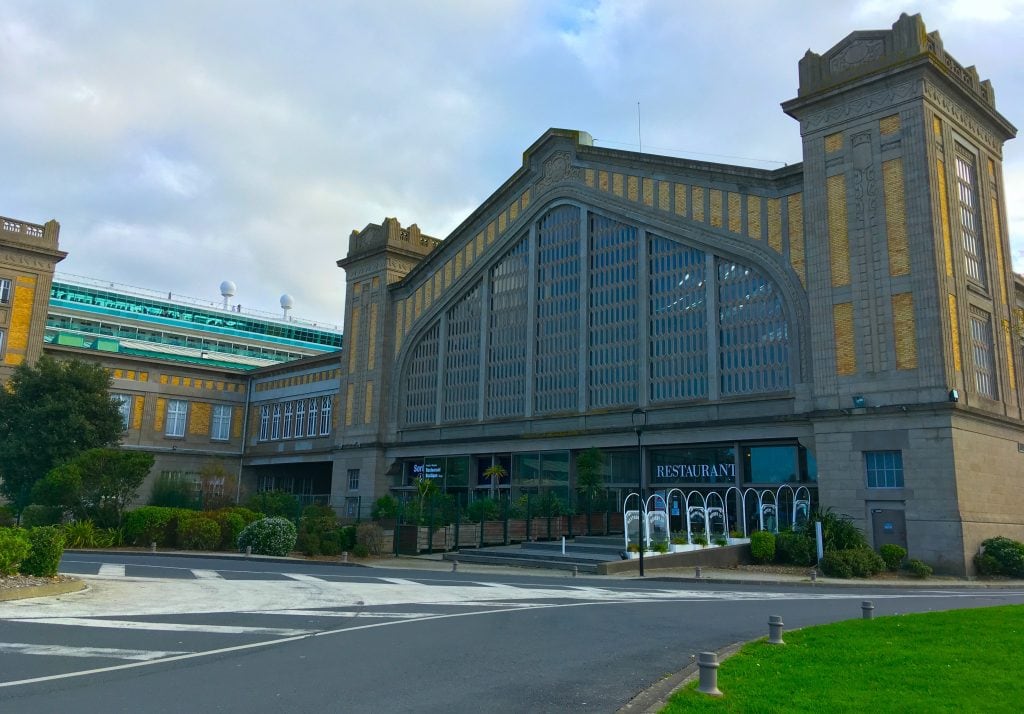
I visited the museum on a cruise with Royal Caribbean a few years ago. To learn more about the museum, check out this post. (The cruise ships now dock right beside the museum):
Cherbourg Port: Destination Guide
By 8.10 pm, the Titanic was on her way. She sailed overnight to the south of Ireland and the harbour of Queenstown.
Titanic’s Third Journey – From Queenstown to New York
The Titanic left Queenstown, her last ever stop on Thursday, 11th April, at 1:55 pm.
The Titanic arrived in Queenstown (today known as Cobh) to pick up its last passengers before beginning the trans-Atlantic voyage. The ship dropped anchor at Roches Point.
Before the First World War, Queenstown was Ireland’s most important mail and passenger port.
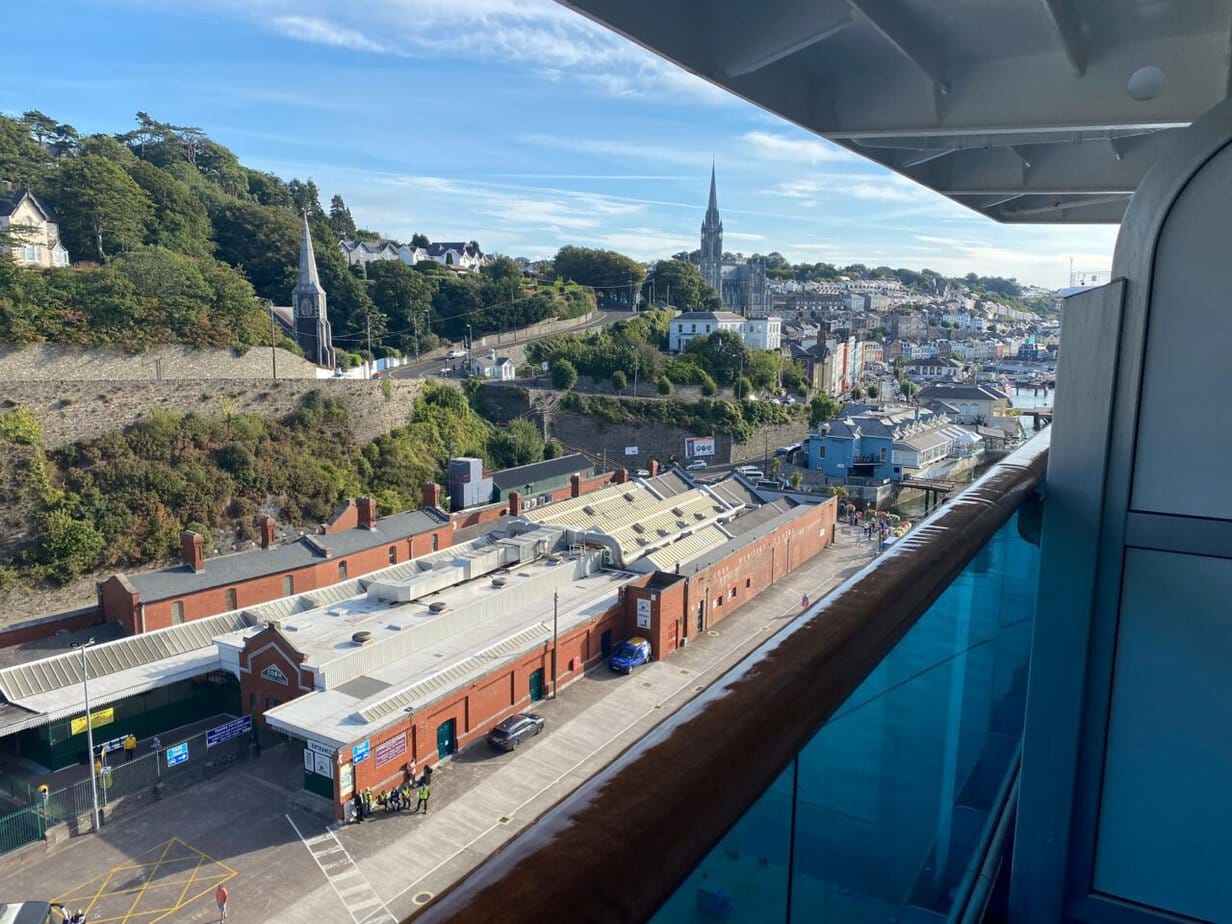
Two tenders were responsible for transporting the passengers from Cork Harbor – the PS Ireland and the PS America. They were paddle-wheel steamships of the White Star Line, built around 1891.
| Passengers Embarking the Titanic in Queenstown | Total Titanic Passengers | Percentage Embarked in Southampton | |
| First Class | 0 | 324 | 0% |
| Second Class | 7 | 284 | 4% |
| Third Class | 113 | 709 | 16% |
Seven passengers were disembarked, including Father Francis Browne, a Jesuit trainee, whose photographs were the last ever taken of the Titanic.
At 1.30 pm, to the sound of a whistle blast and bagpipes, the Titanic lifted her anchor and started her journey.
One final stop was necessary at the Daunt Light ship. This was to drop off the pilot who had guided the ship in and out of Cork Harbor.
The Sinking of The Titanic
The ship made good time for the next two days but the Titanic was never able to complete her maiden voyage.
On the 14th April 1912, after four days at sea, the Titanic struck an iceberg that tore a hole in the ship’s hull below the waterline.
The hull began filling with water, and within three hours, the vessel had sunk. Because of a lack of lifeboats and the proper emergency procedures, only 705 people survived the disaster.
I visited Southampton, Belfast and Cobh on a very interesting cruise around the UK. Find out about the other interesting ports I visited (Liverpool, Edinburgh etc) here:
Before You Go
To learn more about why the Titanic sank (there were lots of factors) check out this post:
It Wasn’t Just The Iceberg That Sank The Titanic – Survivor Accounts
Find out how big the Titanic was, compared to everyday objects here:
How Big Was The Titanic Compared to Everyday Objects?
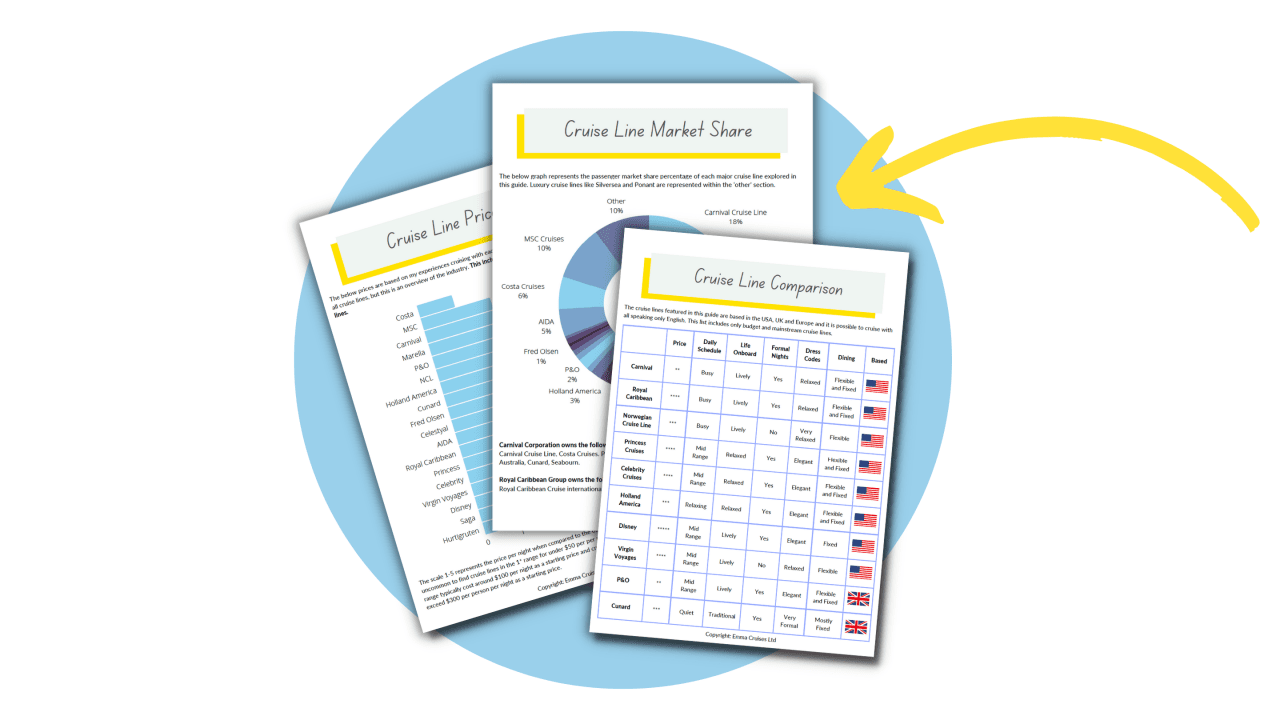
Free Insiders Cruise Line Guide
Ever wondered how the mainstream cruise lines compare? Cruise lines won’t tell you this, but I will.
This FREE guide shows you everything you need to know to find your perfect cruise line.
Whenever I take a cruise I order a print of my trip. It uses the real satellite data from the cruise and is always a great conversation starter!
I'm building an impressive collection...
Code EMMACRUISES will get you 10% off

